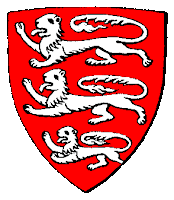Rebel Army: Half Way

This would have to be the first gratuitous posting for the Project Lewes blog but probably not the last. I am celebrating the fact that the first two wards of four for the Montfortian army at Lewes has been completed (bar the base texturing). This is also a tester for the frontage of the table top. Whilst I will be designing and building specific scenery for Lewes, I need to see what the board size needs to be. The layout here is fairly representative of how the army will array itself - at least for infantry frontage - and I clearly need to allow for at least half as much width again to accommodate the central ward (the left and right being those in shot and built thus far). Whilst I believe Simon de Montfort kept his fourth ward as reserve and out of sight to the rear, I will nevertheless build the battlefield to allow manoeuvre - something not often done in wargaming from my observation. As an aside, I have long felt that table-tops should accommodate at least a third as much area...







